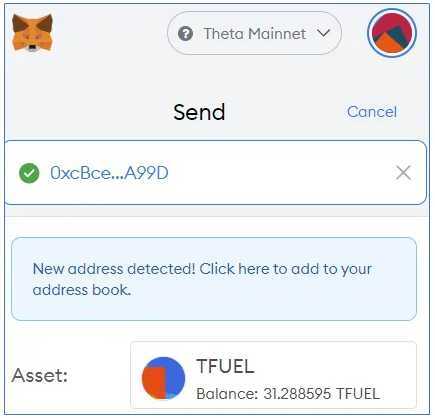As the decentralized web continues to evolve, the need for seamless integration between blockchain platforms and popular wallets has become increasingly important. Theta Network, a leading blockchain for AI, media, and entertainment, has made significant strides in bridging this gap by partnering with Metamask, a widely-used Ethereum wallet.
In this guide, we will walk you through the step-by-step process of adding the Theta Blockchain to Metamask, enabling you to seamlessly interact with Theta's decentralized applications (dApps) and take advantage of its unique features.
By following this tutorial, you will be able to:
- Add the Theta Blockchain to your Metamask wallet
- Access Theta's dApps and decentralized services
- Participate in Theta's decentralized governance and voting processes
- Take advantage of Theta's unique features, such as its smart contracts and EVM support
Whether you're a seasoned blockchain enthusiast or just starting your journey, this guide will provide you with the necessary tools and knowledge to unlock the full potential of Theta Blockchain with Metamask.
Theta’s vision for 2021 and beyond includes vastly expanded compatibility with Ethereum, allowing any Ethereum or ETH-compatible application to be ported over and run seamlessly on Theta blockchain with little to no changes. This will include an Ethereum-compatible RPC API suite, smart contract development tools, Truffle Suite and Remix integration, and other components like Web3.js, Ether.js. Today we’ll walk through one of the first aspects of this initiative through the popular Metamask plug-in.
NOTE: At this time some exchanges, such as Binance, do not support receiving Theta blockchain tokens from a smart contract address, which is how they are sent via the Metamask plug-in. If you send tokens to an exchange address via Metamask, they may be lost.
To access a Theta address through Metamask, first open Metamask in your web browser (if you don’t have Metamask, you can download it here). You will need to input Theta blockchain as a custom Metamask network. You can do this by clicking the current network you are using (likely “Ethereum Mainnet”) then clicking “Custom RPC”. Input this data in the fields requested:
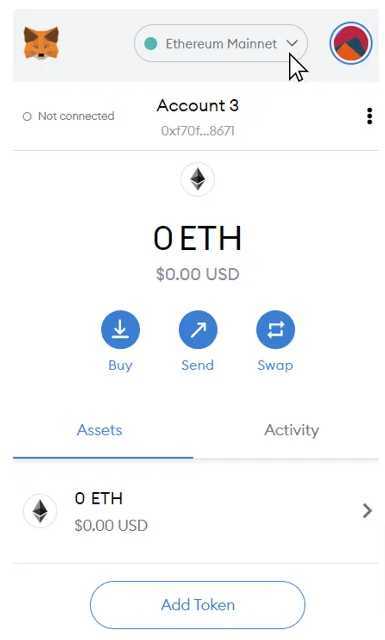
Network Name: Theta Mainnet
New RPC URL: https://eth-rpc-api.thetatoken.org/rpc
Chain ID: 361
Currency Symbol: TFUEL
Block Explorer URL: https://explorer.thetatoken.org/
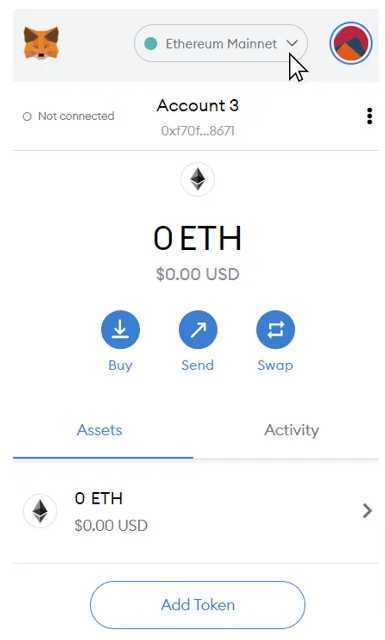
Your Metamask extension should now show that it is connected to Theta Mainnet. Next, in the Metamask settings click Import Account to add the Theta wallet you want to use with Metamask, via your Theta keystore file or private key. You can also use the “Connect Hardware Wallet” option to transact TFUEL or TNT-20 tokens you have stored on a Ledger or Trezor device.
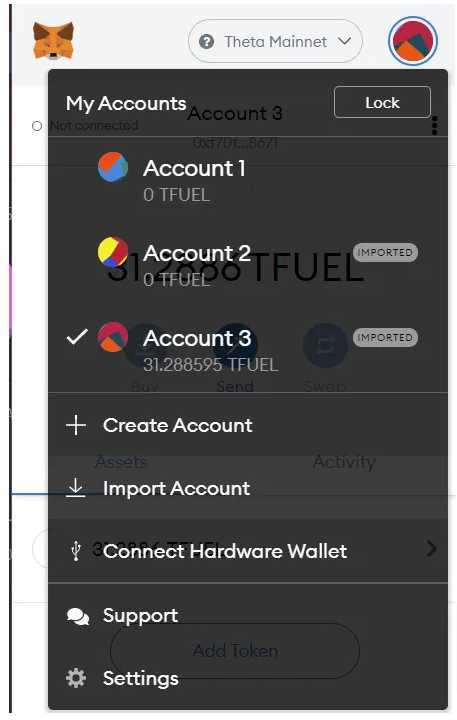
Make sure to turn off your Wi-Fi connection before entering the private key or keystore file. Metamask is designed to allow you to enter this sensitive information while offline. Once the address is loaded into Metamask, it is safe to reconnect to the internet. You will now see your address loaded with your TFUEL balance displayed. You can now send your TFUEL to any other Theta address using the same steps you would normally use to send ETH/tokens through Metamask.
Note, at this time Metamask only works to store and transfer TFUEL and TNT-20 tokens. It cannot be used with the THETA token for technical reasons, though this may be developed in the future. This Metamask integration is intended to facilitate interaction between Theta and Ethereum for dapp development purposes which primarily uses TFUEL and TNT-20 tokens, rather than THETA which is intended to be staked long-term to Theta nodes.
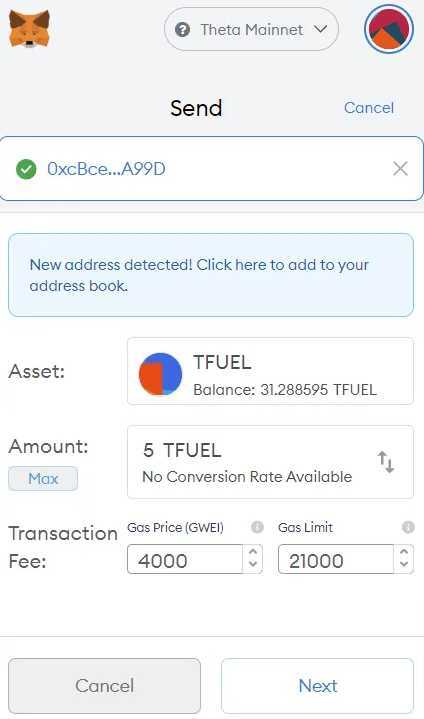
To add any TNT-20 tokens you have to Metamask, the steps are the same as for adding custom tokens on Ethereum/BSC/etc. On the Assets tab, click Add Token, then enter your tokens Theta smart contract address, and if they are not auto-populated the Token Symbol and the Token Decimal (typically 18).
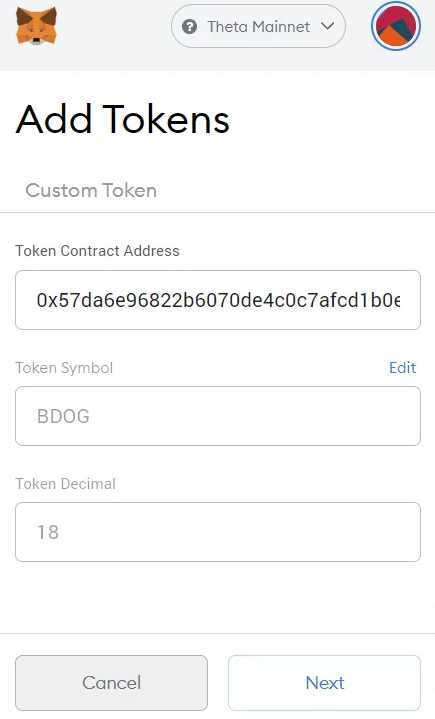
Your TNT-20 token(s) will then display below TFUEL and can be sent to other Theta addresses with the same procedure as TFUEL. (Note: As of Metamasks 12.9.3 update, Tfuel is the only token that will be displayed on Metamask. This is being worked on. Other TNT-20 tokens that you may have in the wallet (Eg. 3 BDOG, Lavita, Tdrop) are still there and can be swapped/traded etc on any swap aggregator such as Thetaswap.org , They just will not be visable in metamask. Again, the devs are aware and this is being worked on.
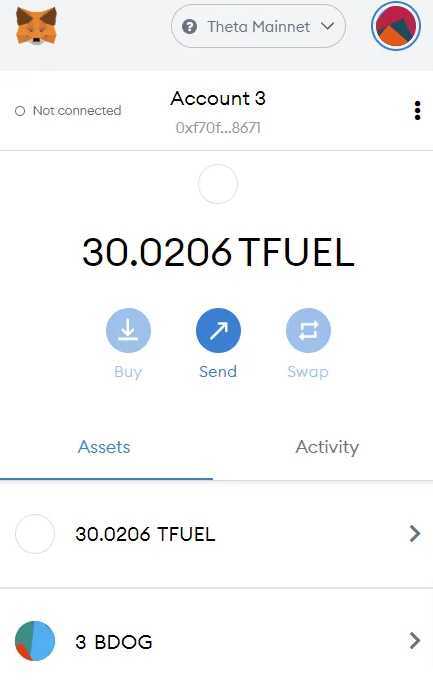
More development tools are on the way to further support the Theta dev community and cross-chain applications. Interested developers can also reach the Theta team on Theta GitHub to get started building today.

